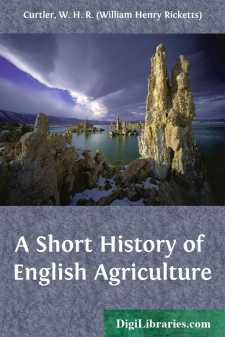Categories
- Antiques & Collectibles 13
- Architecture 36
- Art 48
- Bibles 22
- Biography & Autobiography 813
- Body, Mind & Spirit 142
- Business & Economics 28
- Children's Books 17
- Children's Fiction 14
- Computers 4
- Cooking 94
- Crafts & Hobbies 4
- Drama 346
- Education 46
- Family & Relationships 57
- Fiction 11829
- Games 19
- Gardening 17
- Health & Fitness 34
- History 1377
- House & Home 1
- Humor 147
- Juvenile Fiction 1873
- Juvenile Nonfiction 202
- Language Arts & Disciplines 88
- Law 16
- Literary Collections 686
- Literary Criticism 179
- Mathematics 13
- Medical 41
- Music 40
- Nature 179
- Non-Classifiable 1768
- Performing Arts 7
- Periodicals 1453
- Philosophy 64
- Photography 2
- Poetry 896
- Political Science 203
- Psychology 42
- Reference 154
- Religion 513
- Science 126
- Self-Help 84
- Social Science 81
- Sports & Recreation 34
- Study Aids 3
- Technology & Engineering 59
- Transportation 23
- Travel 463
- True Crime 29
A Short History of English Agriculture
Description:
Excerpt
CHAPTER I
COMMUNISTIC FARMING.—GROWTH OF THE MANOR.—EARLY PRICES.—THE ORGANIZATION AND AGRICULTURE OF THE MANOR
When the early bands of English invaders came over to take Britain from its Celtic owners, it is almost certain that the soil was held by groups and not by individuals, and as this was the practice of the conquerors also they readily fell in with the system they found. These English, unlike their descendants of to day, were a race of countrymen and farmers and detested the towns, preferring the lands of the Britons to the towns of the Romans. Co-operation in agriculture was necessary because to each household were allotted separate strips of land, nearly equal in size, in each field set apart for tillage, and a share in the meadow and waste land. The strips of arable were unfenced and ploughed by common teams, to which each family would contribute.
Apparently, as the land was cleared and broken up it was dealt out acre by acre to each cultivator; and supposing each group consisted of ten families, the typical holding of 120 acres was assigned to each family in acre strips, and these strips were not all contiguous but mixed up with those of other families. The reason for this mixture of strips is obvious to any one who knows how land even in the same field varies in quality; it was to give each family its share of both good and bad land, for the householders were all equal and the principle on which the original distribution of the land depended was that of equalizing the shares of the different members of the community.
In attributing ownership of lands to communities we must be careful not to confound communities with corporations. Maitland thinks the early land-owning communities blended the character of corporations and of co-owners, and co-ownership is ownership by individuals. The vills or villages founded on their arrival in Britain by our English forefathers resembled those they left at home, and even there the strips into which the arable fields were divided were owned in severalty by the householders of the village. There was co-operation in working the fields but no communistic division of the crops, and the individual's hold upon his strips developed rapidly into an inheritable and partible ownership. 'At the opening of Anglo-Saxon history absolute ownership of land in severalty was established and becoming the rule.'
In the management of the meadow land communal features were much more clearly brought out; the arable was not reallotted, but the meadow was, annually; while the woods and pastures, the right of using which belonged to the householders of the village, were owned by the village 'community'. There may have been at the time of the English conquest Roman 'villas' with slaves and coloni cultivating the owners' demesnes, which passed bodily to the new masters; but the former theory seems true of the greater part of the country.
At first 'extensive' cultivation was practised; that is, every year a fresh arable field was broken up and the one cultivated last year abandoned, for a time at all events; but gradually 'intensive' culture superseded this, probably not till after the English had conquered the land, and the same field was cultivated year after year. After the various families or households had finished cutting the grass in their allotted portions of meadow, and the corn on their strips of tillage, both grass and stubble became common land and were thrown open for the whole community to turn their stock upon....


